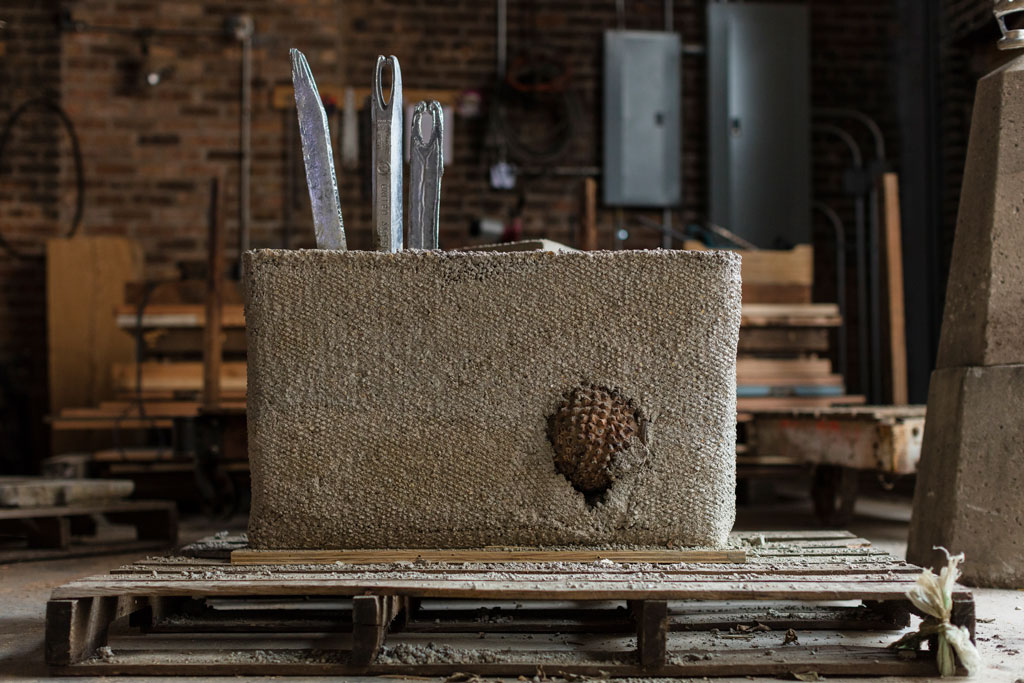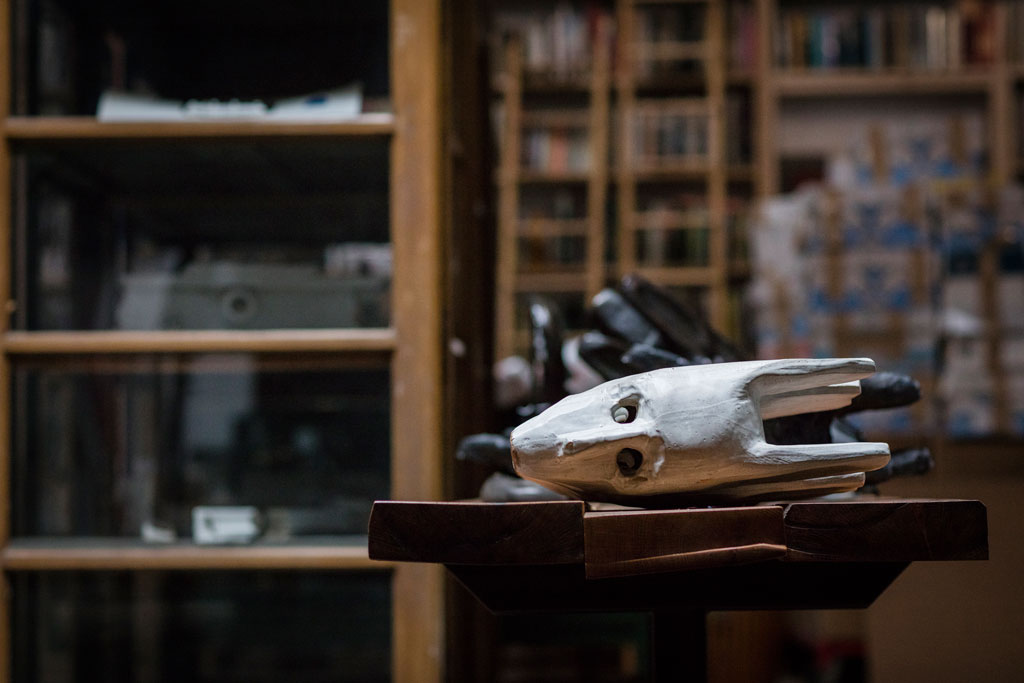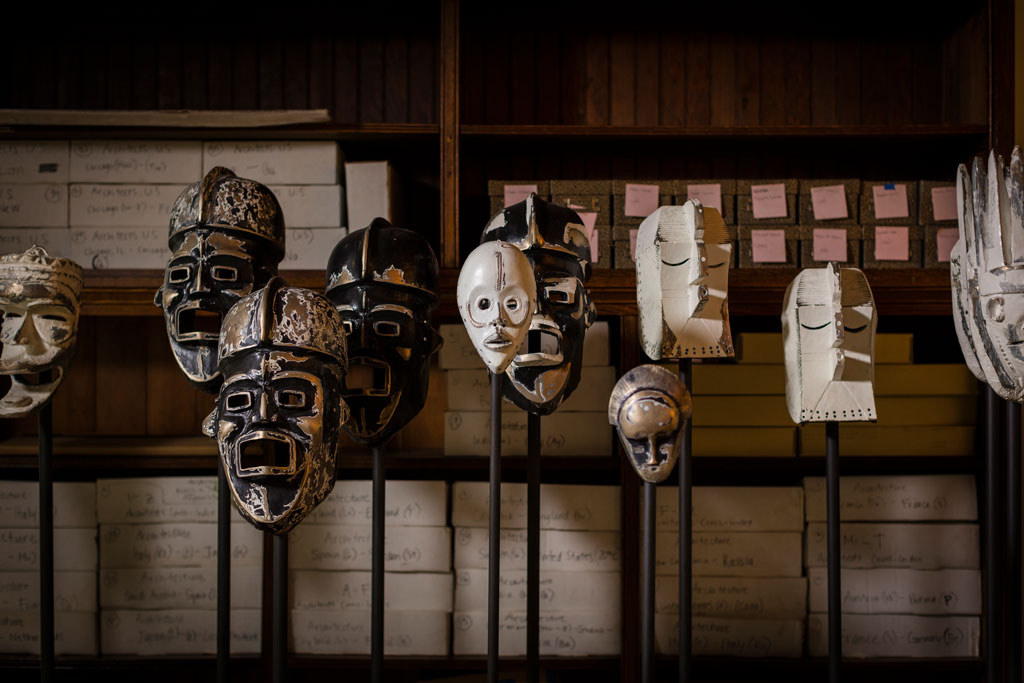ART CITIES:Paris-Theaster Gates
 Encompassing sculpture, painting, ceramics, video, performance, and music, the practice of Theaster Gates both derives from and sustains ambitious urban renewal projects, creating hubs and archives for black culture. In a single decade, he has incubated compelling new models for legacy building, social transformation, and making art.
Encompassing sculpture, painting, ceramics, video, performance, and music, the practice of Theaster Gates both derives from and sustains ambitious urban renewal projects, creating hubs and archives for black culture. In a single decade, he has incubated compelling new models for legacy building, social transformation, and making art.
By Efi Michalarou
Photo: Palais de Tokyo Archive
For “Amalgam” his first solo Museum exhibition in France, Theaster Gates has initiated an entirely new project that explores social histories of migration and interracial relations using a specific episode in American history to address larger questions of black subjugation and the imperial sexual domination and racial mixing that resulted from it. Gates takes inspiration from the story of Malaga Island in the northeastern US state of Maine, where in 1912, the state’s governor had all of the island’s inhabitants expelled-a poor population consisting of an interracial community of some 45 people. The technical term “amalgam” has also been used in the past to denote racial, ethnic, and religious mingling. For Gates, it has acquired an even more charged significance, impelling his practice towards new formal and conceptual explorations. Imagined in four parts: “Altar”, “Island Modernity Institute and Department of Tourism”, “Dance of Malaga, and “So Bitter, This Curse of Darkness” the exhibition invites viewers into a nonlinear narrative wherein land, light, text, dance, and music combine as a tribute, a reminder, and an open question. The probable origins of the Malaga Island historic community trace back to one African American man, Benjamin Darling. He purchased Horse Island (located near Malaga Island) in 1794. Darling’s descendants and their families soon settled on numerous islands throughout the New Meadows River. Although records are not clear, Henry Griffin and Fatima Darling Griffin, with their family, were most likely the first to live on Malaga Island, setting up house on the east side in the early 1860s. By 1880, 27 people lived on the island, with the population increasing to 40 people in 1900. Malaga’s community was racially mixed, consisting of poor African-American, mulatto, and white fishing families from the New Meadows area, as well as others of varied ethnic descent. Malaga’s residents relied almost entirely upon local marine resources to sustain themselves. The island’s stony, glacial soils did not support much in the way of agriculture, although islanders grew vegetables such as potatoes, corn and beans in small garden plots. A few of Malaga’s residents worked on the mainland at nearby resorts and farms. In the early 1900s, the Malaga Island community found itself caught in a time of great change for Maine. A poor economy, the decline of the fishing and ship building industries, a boom in real estate prices, and thriving social reform efforts all affected Malaga. At the same time, the island residents became victims of the eugenics movement, a popular theory that the poor, immoral, or criminal were born that way due to heredity. The eugenics movement was widely accepted as fact throughout the early 1900s and included many advocates such as heads of state, teachers, religious missionaries, journalists, and scientists. The press publicized a common belief that the only way to help Malaga Island’s residents, and improve tourism and property values on the Maine coast, was to dismantle the community. Governor Frederick Plaisted visited Malaga Island in 1911, along with his Executive Council, to see the island for himself. The governor reported he was encouraged by the progress of the children in school, but was not convinced the community would ever accept a middle-class style of living. After his visit, Plaisted remarked, “the best plan would be to burn down the shacks with all their filth. Certainly the conditions are not creditable to our state, and we ought not to have such things near our front door, and I do not think that a like condition can be found in Maine, although there are some pretty bad localities elsewhere”. Early in 1912, the residents were told they must vacate the island by 1/7/1912. No alternative homes were provided or suggested, but when Agent Pease arrived on Malaga Island on July 1st, he found all the houses were gone – dismantled and removed by the residents themselves. To complete the eviction, the state exhumed the cemetery remains on Malaga Island, combining seventeen individuals into five caskets, and moved them to the cemetery at the Maine School for the Feeble Minded. For decades, generations of descendants felt the need to hide their Malaga Island ancestry. The term “Malagite” became a racial slur commonly used on Maine’s coast.
Info: Curator: Katell Jaffrès, Palais de Tokyo, 13 Avenue du Président Wilson, Paris, Duration: 20/2-12/5/19, Days & Hours: Mon & Wed-Sun 12:00-24:00, www.palaisdetokyo.com



